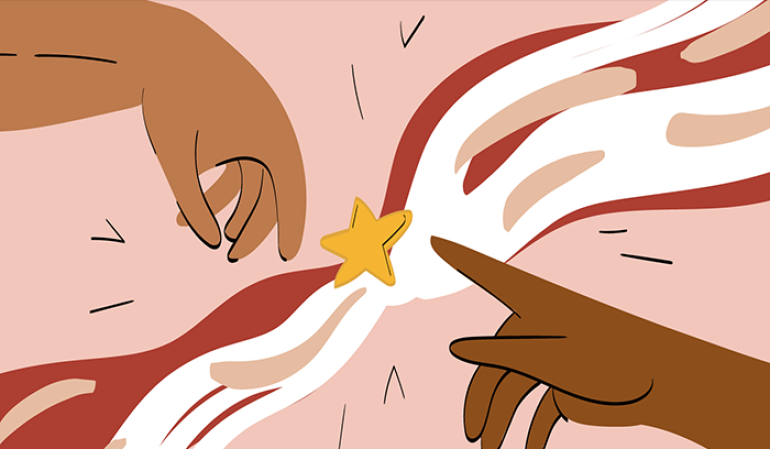YES! The elusive G-spot truly does exist, and it is worth exploring!
What is the G-spot?
Named after Dr. Ernst Grafenberg, the urologist who discovered it, the G-spot is a scientifically researched area that can provide incredible pleasure.
The G-spot is the equivalent of the penis owner’s prostate, demonstrating similar traits and functions; all vulva owners have one and are capable of ejaculating prostatic fluid.
Why is the G-spot so special?
The G-spot is a vine-like structure that surrounds the urethral canal (the tube that urine exits the body). It is only one-fourth the size of the walnut-shape prostate, but it has much more ducts/glands.
For both penis and vulva owners, these ducts/glands supply prostatic fluid which can be ejaculated from the urethra. The quantity of prostatic fluid can be as little as a teaspoon to a gushing one-half cup. If this amount is hard to imagine, think of all the liquid two little tear glands can produce.
The G-spot is surrounded by the nerve-rich clitoral bulb. It also has its own nerve supply (pelvic nerve), creating a highly enjoyable place for women to explore. This dual nerve innervation not only makes it possible for vulva owners to have two distinct types of orgasms (a clitoral orgasm and a G-spot orgasm) but also to experience an amazing combination of these two types simultaneously, known as a blended orgasm.
Where is the G-spot?
Many vulva owners have difficulty finding their G-spot, but with a little instruction, this pleasure- factory can be found. It is important to realize that this is an area stimulated through the vaginal wall, and it is easiest to identify once a woman is aroused.
The G-spot can be found anteriorly (the roof of the vagina) and depending on one’s anatomy, it will be found in different locations. The majority of vulva owners will find it right beyond their vaginal entrances, but the rest will find it either mid-way or further back by the cervix. The area feels like corduroy ridges and is more pronounced (and feels more enjoyable) after stimulation causes its tissues to swell.
The ridged tissue can be followed to the tail of the G-spot. When stimulated in a gentle “come hither” motion, one can experience pleasing sensations while feeling the body of the prostate. Additionally, since the urethral meatus (the hole that urine exits the body) is generally the head of the G-spot, many vulva owners like the way it feels when this area is stimulated.
Does the G-spot produce ejaculate or urine?
Since vulva owners both urinate and ejaculate through their urethral canals, residual urine can be identified in ejaculate (explaining the claims that ejaculate is only urine). Yet, ejaculate has been scientifically studied and found to be a type of fluid in its own right.
What is ejaculate?
It is a clear liquid with a higher pH than urine, and its taste and smell have been found to vary depending on where the vulva owner is in their menstrual cycle. It contains prostatic fluid along with glucose and trace amounts of urine. Ejaculate’s higher pH and glucose content are thought to play a positive role in fertilization; both promote a supportive environment for sperm to survive while traveling through the vagina.
Small amounts of ejaculate seep into the vagina during G-spot stimulation. If the full amount of accumulated ejaculate is not expelled, it moves back into the bladder and is urinated out (and explains the reason women why feel like their bladders’ have filled during vaginal penetration).
Many vulva owners mistake the urge to ejaculate as the need to urinate, and therefore contract the pelvic muscles to prevent it. Whether they decide they want to release the ejaculate or not, spectacular G-spot orgasms can still be experienced!
.
